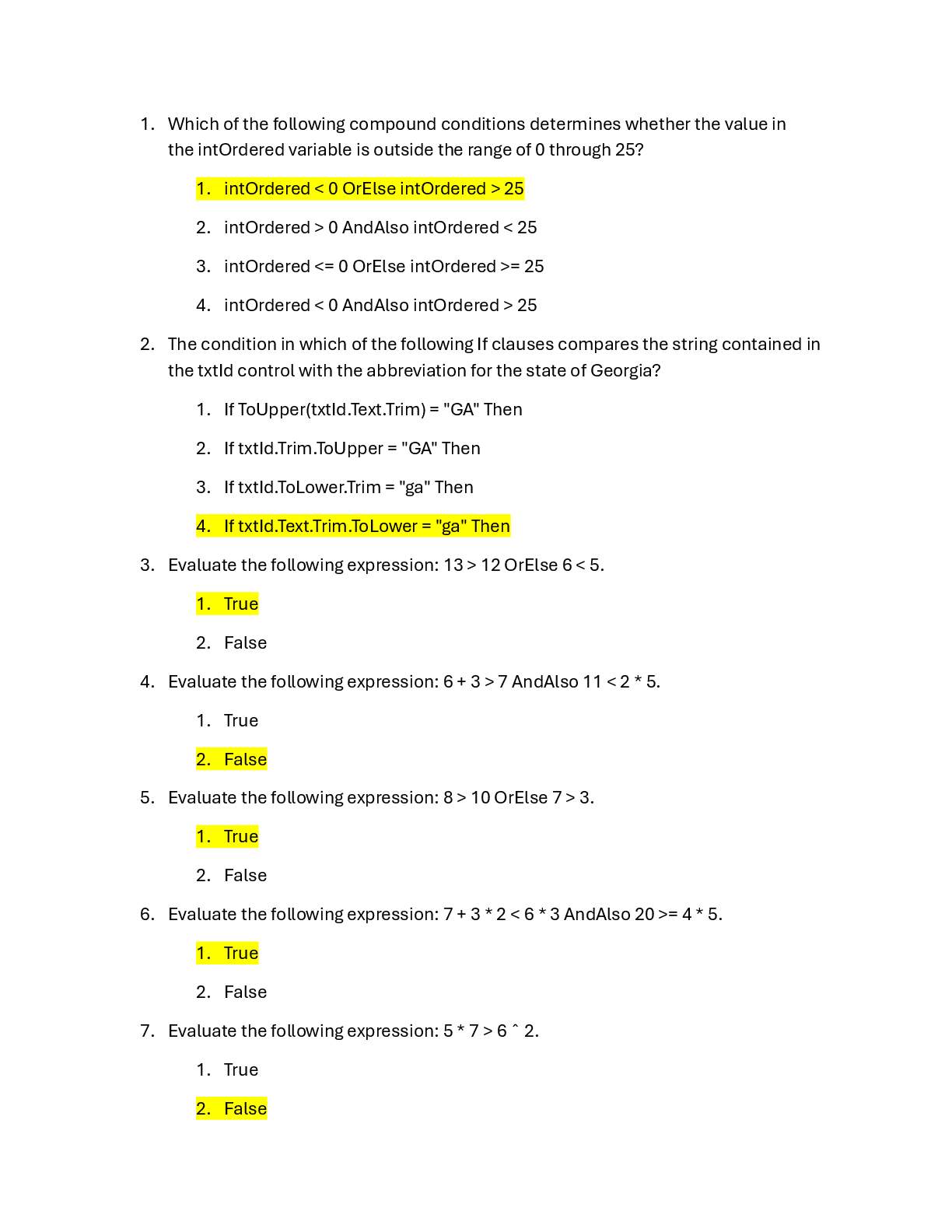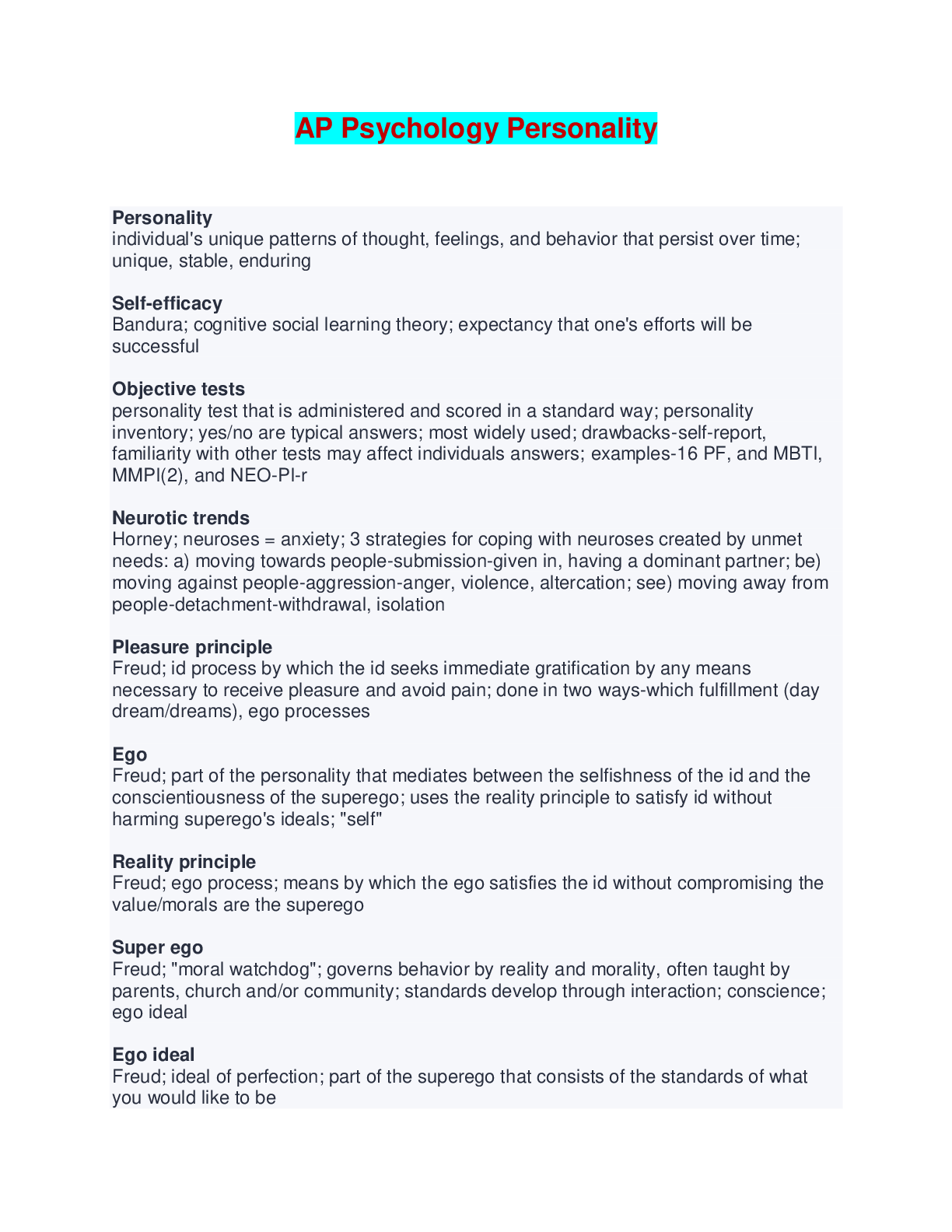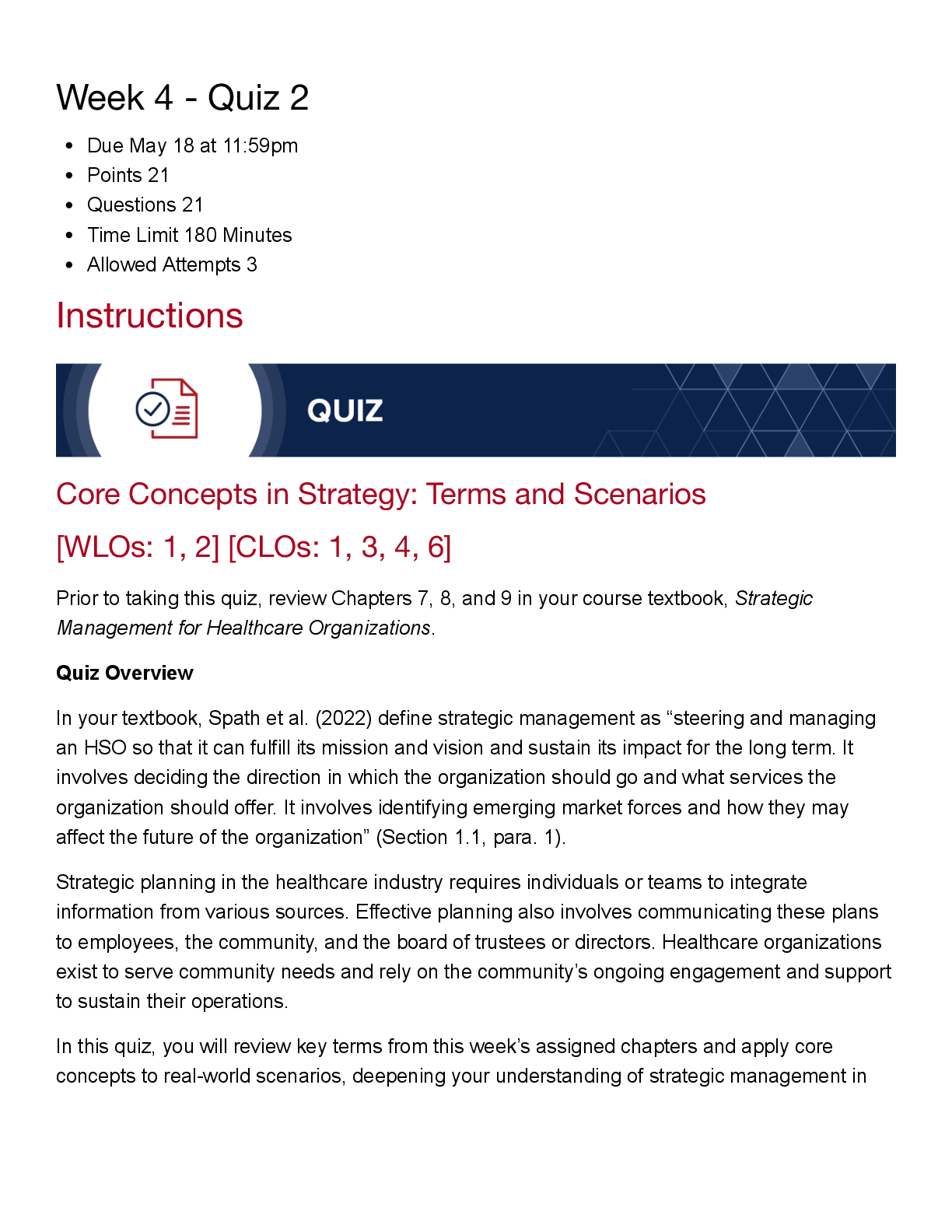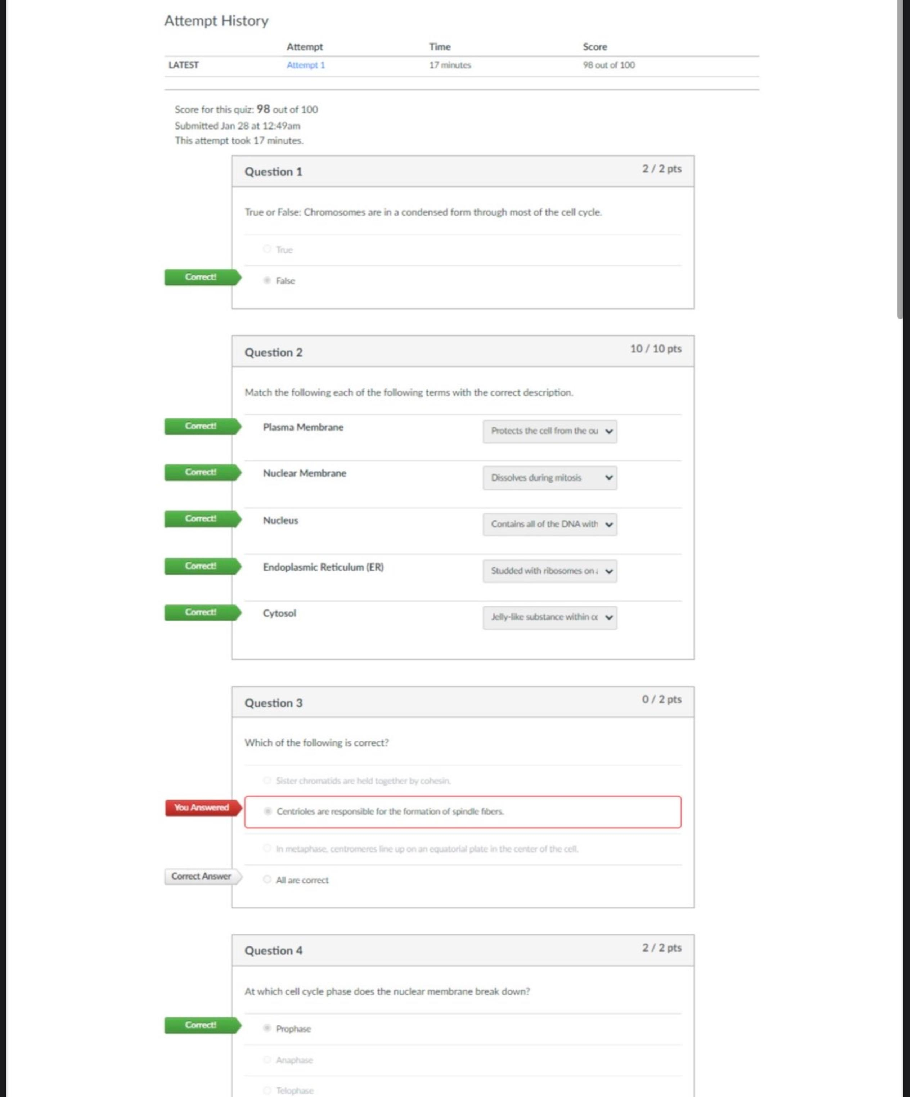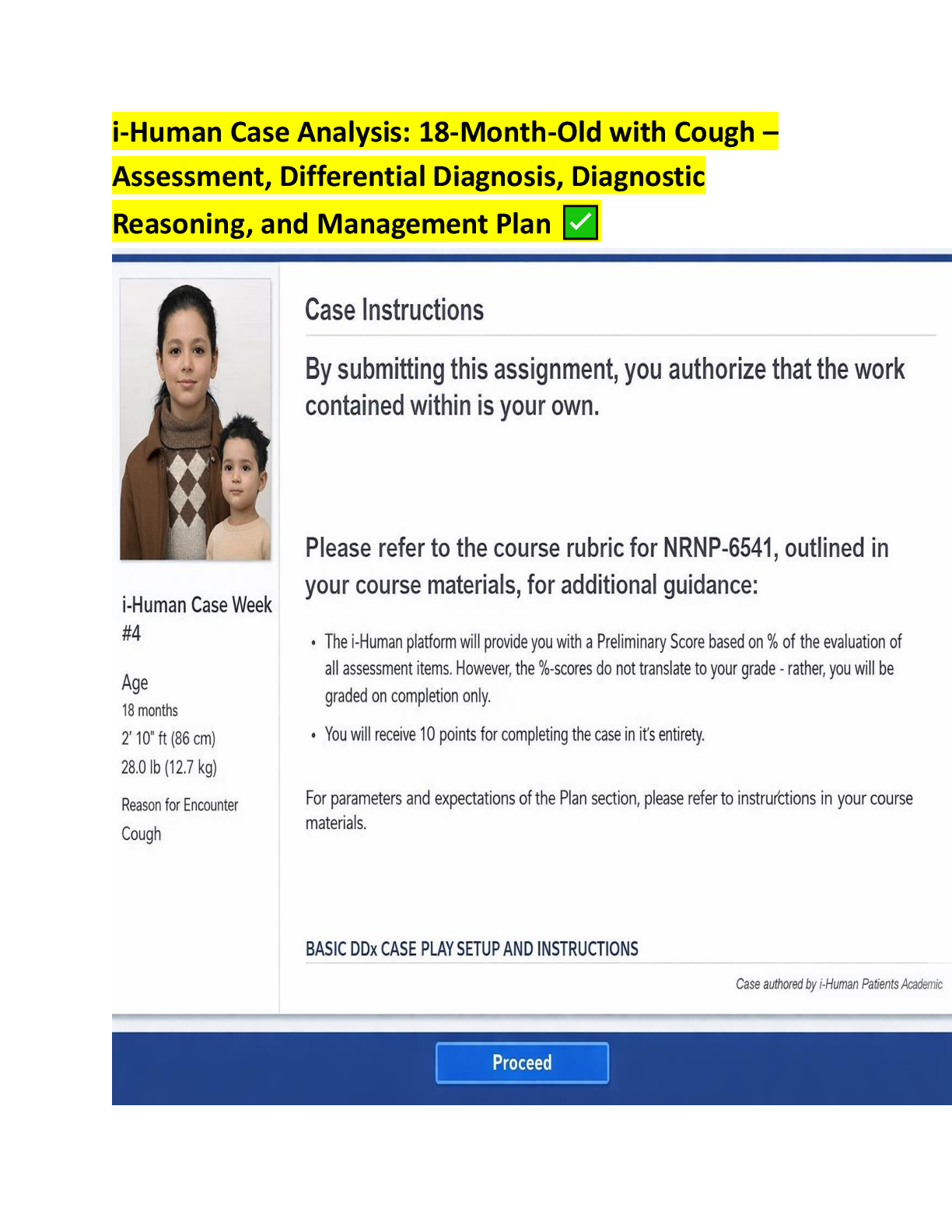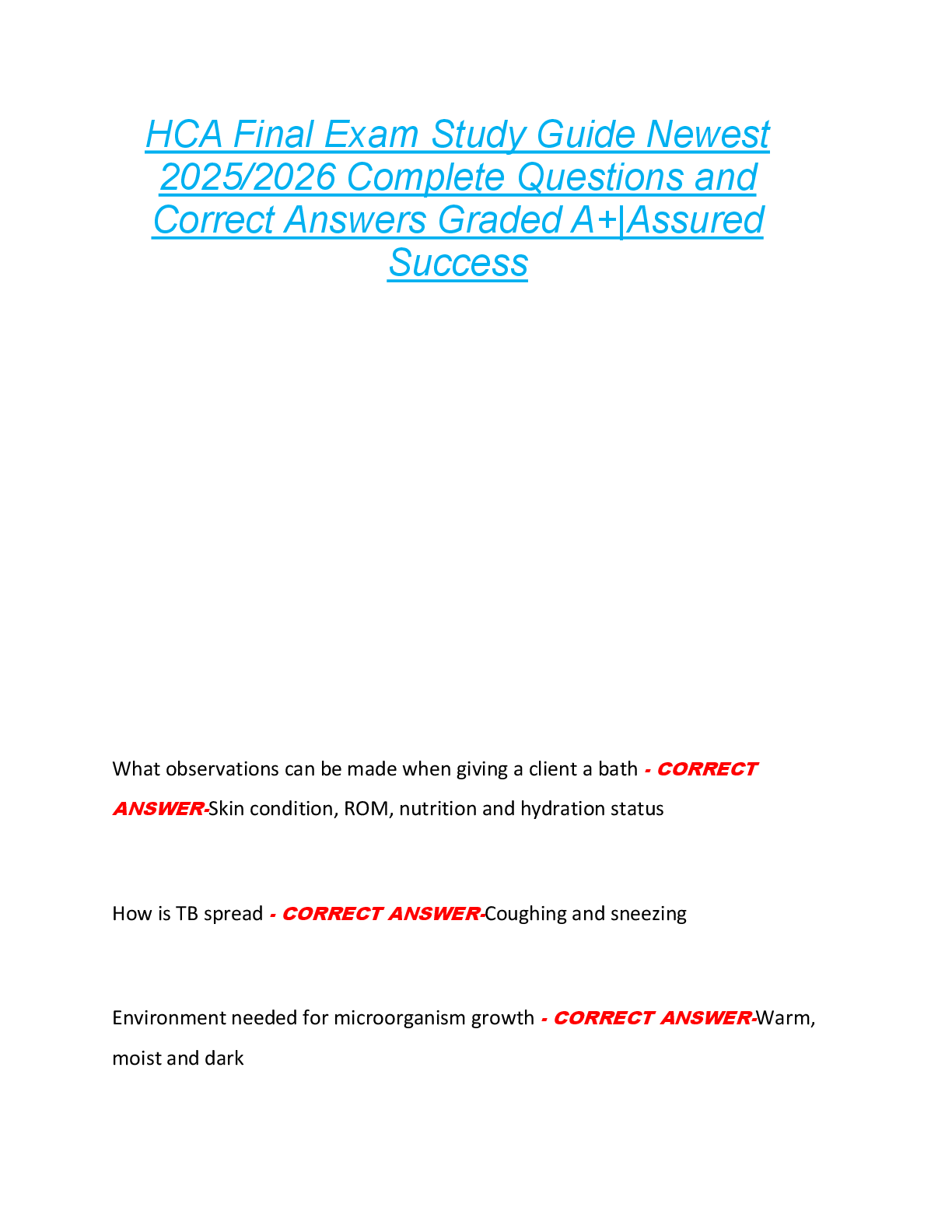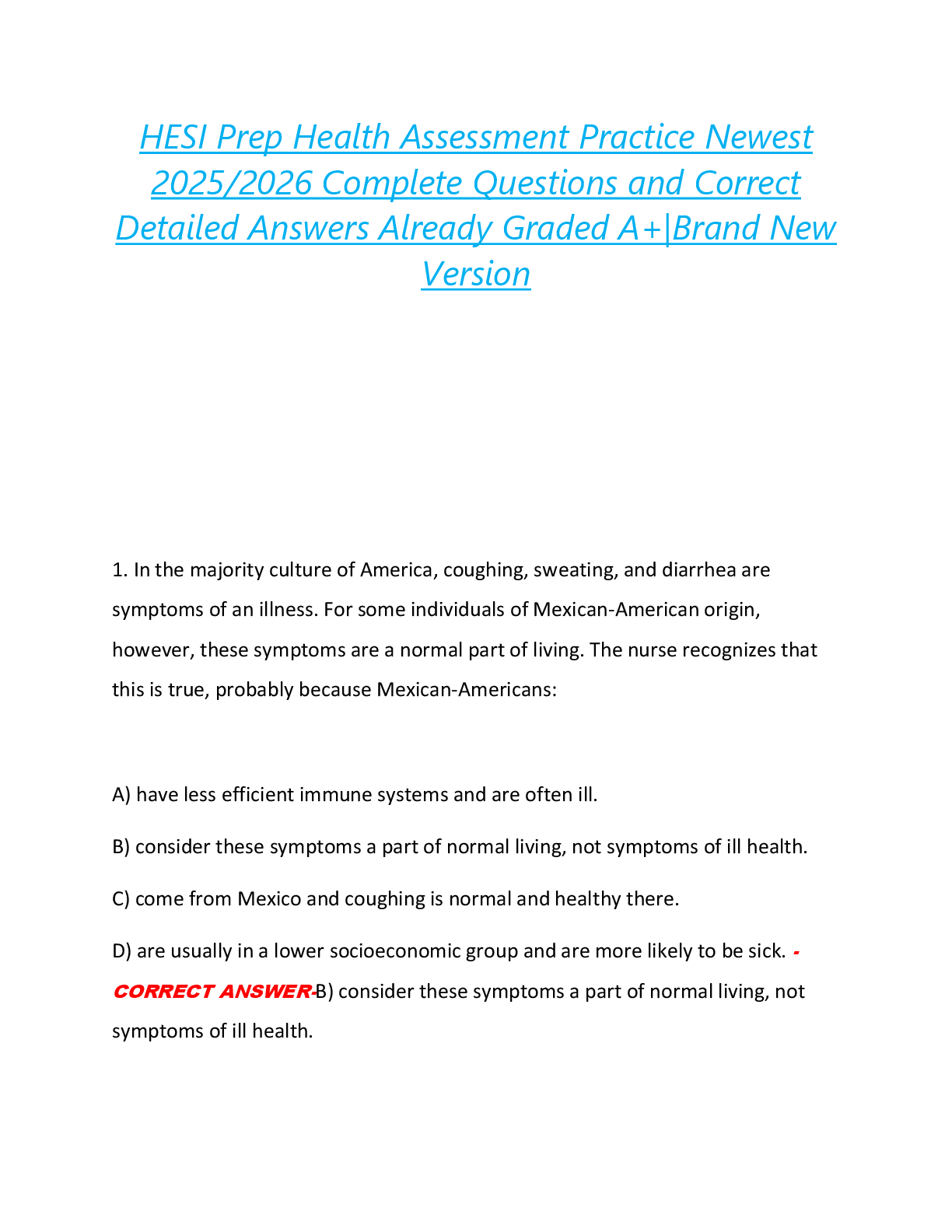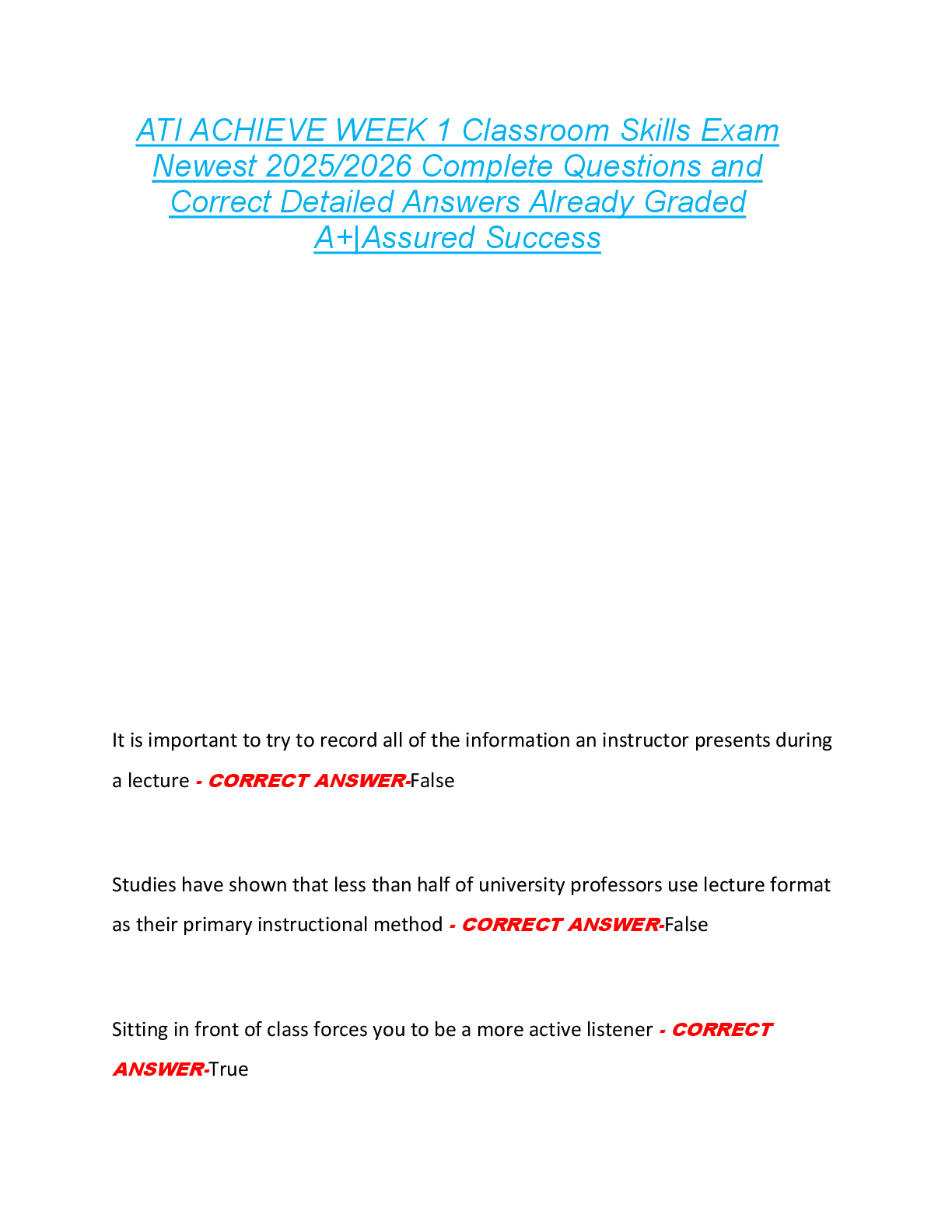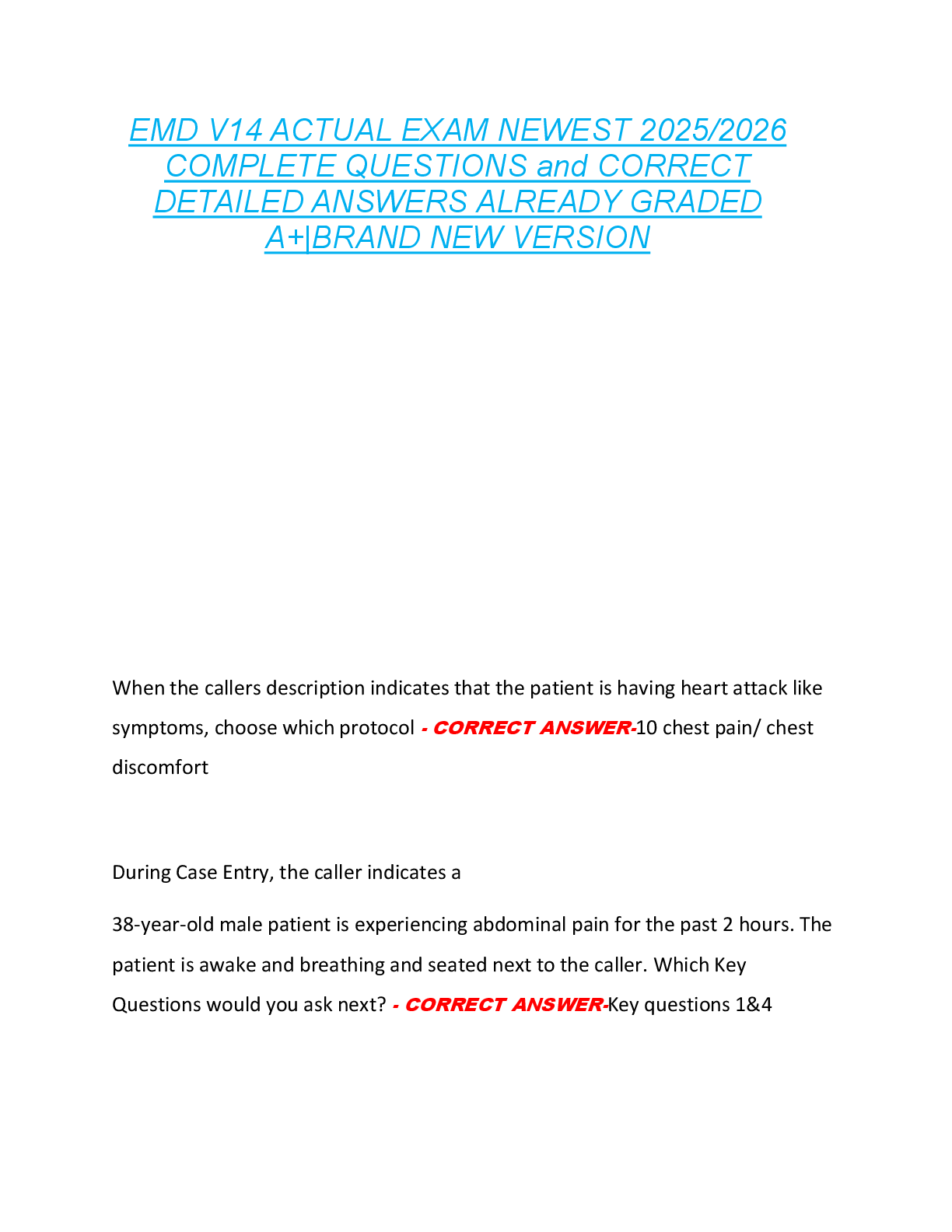Health Care > EXAM > HSC 404 Final Exam (Ch 9-13, 15-16) | Questions with Verified Answers (All)
HSC 404 Final Exam (Ch 9-13, 15-16) | Questions with Verified Answers
Document Content and Description Below
HSC 404 Final Exam (Ch 9-13, 15-16) | Questions with Verified Answers The strategy which is not aimed at reducing selection bias is: A. Development of an explicit case definition B. Standardized pr ... otocol for structured interviews C. Enrollment of all cases in a defined time and region D. Encouragement of high participation rates Recall bias is most likely to occur in: A. Case control studies B. Prospective cohort studies C. Experimental studies D. All of the above E. None of the above The purpose of a double-blind study is to: A. Reduce the effects of sampling variation B. Avoid observer bias and sampling variation C. Achieve comparability of cases and controls D. Avoid observer and interviewee bias E. Avoid interviewee bias and sampling variation In a study to determine the incidence of chronic disease, 150 people were examined at the end of a three-year period. Twelve cases were found, giving a cumulative risk of 8%. Fifty other members of the initial cohort could not be examined; 20 of these 50 could not be examined because they died. Which source of bias may have affected the study? A. Information bias: interviewer/abstractor bias B. Hawthorne Effect C. Selection bias: survival bias D. Information bias: recall bias Which of the following is not a type of selection bias in cohort studies: A. Loss to follow-up B. None of the above C. Healthy worker effect D. Interviewer bias Surgeons at Hospital A report that the mortality rate at the end of a one-year follow-up after a new coronary bypass procedure is 15%. At Hospital B, the surgeons report a one-year mortality rate of 8% for the same procedure. Before concluding that the surgeons at Hospital B have vastly superior skill, which of the following possible confounders would you examine? A. The severity (stage) of the disease of the patients at the two hospitals at baseline B. The starting point of the one-year follow-up at both hospitals C. Different in the post-operative care at the two hospitals D. Equally through follow-up for mortality E. All of the above Which of the following is not a method for controlling the effects of confounding in epidemiologic studies? A. Matching B. Randomization C. Stratification D. Restriction E. Blinding An epidemiologic experiment is performed in which one group is exposed to a suspected factor and the other is not. All individuals with an odd hospital admission number are assigned to the second group. The main purpose of this procedure is to: A. Prevent observer bias with respect to the factor B. Prevent observer bias with respect to the outcome C. Improve the likelihood that the two groups will be comparable with regard to known and unknown confounding factors. D. Ensure a double-blind study E. Guarantee comparability of the two groups with regard to other relevant factors You are investigating the role of physical activity in heart disease and suggest that physical activity protects against having a heart attack. While presenting these data to your colleagues, someone asks if you have thought about confounders such as factor X. This factor X could have confounded your interpretation of the data if it: A. Is a factor associated with physical activity and heart disease B. Is a factor for some other disease, but not heart disease C. Has caused a lack of follow-up of test subjects D. Is a part of the pathway by which physical activity affects heart disease In a case-control study of the relationship of radiation exposure and thyroid cancer, 50 cases admitted for thyroid cancer and 100 "controls" admitted during the same period for treatment of hernias were studied. Only the cases were interviewed, and 20 of the cases were found to have been exposed to x-ray therapy in the past, based on the interviews and medical records. The controls were not interviewed, but a review of their hospital records when they were admitted for hernia surgery revealed that only 2 controls had been exposed to x-ray therapy in the past. Based on the description, what source of bias is least likely to be present in this study? A. Bias due to controls being non representative of the non diseased population B. Bias due to use of different methods of ascertainment of exposure in the cases and controls C. Bias due to loss of subjects from control groups over time D. Recall bias E. Selection bias for exposure to x-ray therapy in the pat The degree of agreement among several trained experts refers to: A. Concurrent validity B. Repeated measures C. Internal consistency D. Inter-judge reliability A test that determines whether disease is actually present is a: A. Diagnostic test B. Screening test C. Reliability test D. None of the above A new blood test has been developed to screen for disease Z. Researchers establish 50 units as a cut point above which a test is considered positive and thereby indicative of disease. The test manufacturers determine that the test's sensitivity is unacceptably low. However, the manufacturers are not concerned with the specificity and do not want the cost of the test to rise. How can they improve the sensitivity of the test? A. Raise the cut point above 50 units B. They cannot improve the test and should begin work developing a new test C. Lower the cut point below 50 units D. Test each person's blood twice A screening examination was performed on 250 persons for Factor X, which is found in disease Y. A definitive diagnosis for disease Y among the 250 persons had been obtained previously. The results are charted below: TEST RESULTS Disease Present Disease Absent Positive for Factor X 40 60 Negative for Factor X 10 140 The sensitivity of this test is expressed as: A. 7% B. 80% C. 56% D. 70% E. 30% A screening examination was performed on 250 persons for Factor X, which is found in disease Y. A definitive diagnosis for disease Y among the 250 persons had been obtained previously. The results are charted below: The specificity of this test is expressed as: A. 70% B. 56% C. 7% D. 80% E. 30% A new screening test for Lyme disease is developed for use in the general population. The sensitivity and specificity of the new test are 60% and 70%, respectively. Three hundred people are screened at a clinic during the first year the new test is implemented. Assume the true prevalence of Lyme disease among clinic attendees is 10%. The predictive value of a positive test is: A. 6.0% B. 33% C. 22.2% D. 94% E. 18.2% A new screening test for Lyme disease is developed for use in the general population. The sensitivity and specificity of the new test are 60% and 70%, respectively. Three hundred people are screened at a clinic during the first year the new test is implemented. Assume the true prevalence of Lyme disease among clinic attendees is 10%. The number of false positives is: A. 81 B. 9 C. 2,162 D. 99 E. 12 Drs. Poke and Jab (2014) conducted an employee health program that used 5 screening tests at the same time to detect diseases among workers. Which type of program is this? A. Mass screening B. Multiphasic screening C. Selective screening D. Ad hoc screening Lead time bias is best described as: An apparently lower survival rate among persons screened compared to an unscreened group. A new antibody test detects serum antibodies against virus X (sensitivity 99%, specificity 90%). When applied in a group of hospitalized patients diagnosed as having virus X infections, the test is found to have a positive predictive value of 85%. When used to screen a group of healthy blood donors for virus X infections, the test is found to have a positive predictive value of 30%. Which of the following best explains this difference between the positive predictive values? A. Measurement error was introduced into the procedure B. Lead time bias occurs among the blood donors C. Cases of virus X infection are more severe on the hospital D. The prevalence of virus X infection is higher among the hospital patients than among blood donors An outbreak of salmonellosis occurred after an epidemiology department luncheon, which was attended by 485 faculty and staff. Assume everyone ate the same food items. Sixty-five people had fever and diarrhea, five of these people were severely affected. Subsequent laboratory tests on everyone who attended the luncheon revealed an additional 72 cases. The attack rate of salmonellosis was: 28.2% [Show More]
Last updated: 1 year ago
Preview 4 out of 12 pages

Loading document previews ...
Buy this document to get the full access instantly
Instant Download Access after purchase
Buy NowInstant download
We Accept:

Reviews( 0 )
$14.50
Can't find what you want? Try our AI powered Search
Document information
Connected school, study & course
About the document
Uploaded On
Nov 19, 2024
Number of pages
12
Written in
All
Additional information
This document has been written for:
Uploaded
Nov 19, 2024
Downloads
0
Views
38



